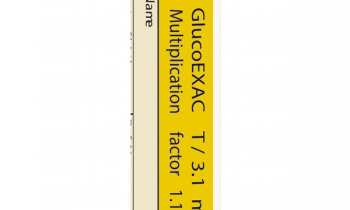The St Vincent Declaration: 20 years on And still diabetes increases
Martin Steinberg reports
In October 1989 ministry of health representatives and members of patient organisations from all European countries met in St Vincent, Italy, to discuss a joint approach to fight diabetes. This resulted in the St Vincent Declaration, the contents and objectives of which were to be implemented ‘urgently’. 20 years later, the figures on prevalence, mortality and diabetes related costs are still alarmingly high – and on the increase.
According to results from an audit published by the Federation of European Nurses in Diabetes (FEND) jointly with the International Diabetes Federation (IDF) last year, over 30 million Europeans are already diabetics. Cases have increased dramatically in countries such as Cyprus (2003: 5.1%; 2006: 10.3%), Luxembourg (3.8% / 6.9%) and the Netherlands (3.7% / 7.3%) where the prevalence of diabetes has doubled within just a few years.
The paper ‘Diabetes – The Policy Puzzle: Is Europe Making Progress?’ raises an important question, which cannot be answered for Europe as a whole. For whilst the prevalence of diabetes in some countries has doubled within just three years, in others e.g. Bulgaria, Hungary, Poland or Romania there is hardly an increase. The problem with looking at the ‘diabetes pandemic’ is the validity of data on which calculations are based. As the data on prevalence and therefore the estimated number of unknown cases vary from study to study and also depend on the statistical method used, the figures derived underlie large fluctuations. In the data published by FEND and IDF the 7.4 million diabetics in Germany cause direct and indirect treatment costs of around ?40 billion a year. In Italy just over half that number of diabetics (around 3.8 million) incurs costs of only ?5.5 billion a year. This comparison either presents questions on the efficiency of the respective healthcare systems – or obviously the quality of data on which the figures are based.
Despite the difficulties in comparing the development of diabetes and the efficiency of the respective counteractions in individual countries the global trend is clear: Diabetes is increasing worldwide and at a faster rate than predicted just a few years ago. This development led to the publication of a UN resolution on diabetes in 2006, to raise more awareness of the disease and instigate national action plans.
This leaves the question as to the opportunities for intervention. In Europe at least there are sufficient tools for diagnosis as well as adequate medication so that, with early diagnosis and early drug treatment, diabetes-related later complications can be avoided and the quality of life can be improved for diabetics. However, the current development of diabetes prevalence in no way reflects this state of affairs in research and treatment ability, which is why we urgently need new strategies for the future.
The problem of non-compliance
However, experts agree that comprehensive prevention as well as successful diabetes treatment depends on the consistent and active cooperation of the patient: ‘The first step towards the avoidance of later complications and subsequent damage is stringent treatment of the underlying disease, particularly with regards to lifestyle. But this requires the active cooperation of the patient. However, the problem of non-compliance often undoes these stringency efforts. In the case of Type 2 diabetes this is somewhere between 40% and 50%. We need to find ways to increase compliance and treatment efficiency. This will include educational measures but also medical interventions that will contribute towards increased compliance through higher patient acceptance,’ conclude the authors of the KODiM study on diabetes mellitus costs in Germany.
Stronger integration of non-medical staff
Evaluating the WHO publicity and the educational approach of the KODiM authors, it is clear that non-medical staff, and those on hospital wards, will play a more important role in diabetes prevention and care in the future. Based on their qualifications as well as patient relationships, nurses are predestined for this task, as shown in model projects for other medical indications (e.g. cardiac nurses). However, this integration can only work with two basic prerequisites: Nurses must be brought up to date with the latest diabetes findings and stay up to date via appropriate training. On the other hand, trained diabetes nurses should be released from other daily tasks, because healthcare systems are too challenged by the diabetes pandemic to deal with it casually.
If the new strategies don’t work, we must suspect that Professor Martin Silink, President of the International Diabetes Federation (IDF) was wrong when, in the context of the UN resolution in 2006, he stated: ‘Today we have won an important battle in the fight against diabetes. The importance is enormous. It will inspire, revive and empower the world of diabetes.’ 20 years after health ministers and scientists departed from St Vincent, we can only remain hopeful that the confidence of diabetes experts will not again be overtaken by actual developments.
01.09.2009










